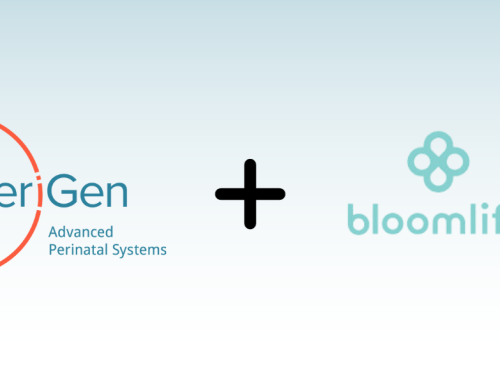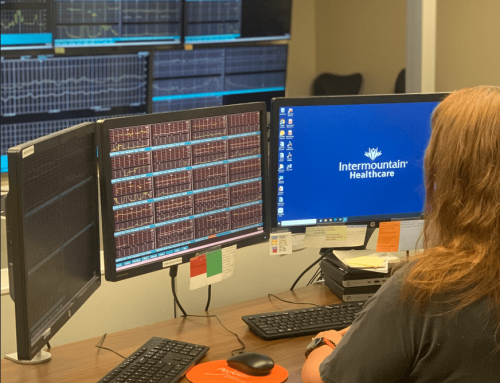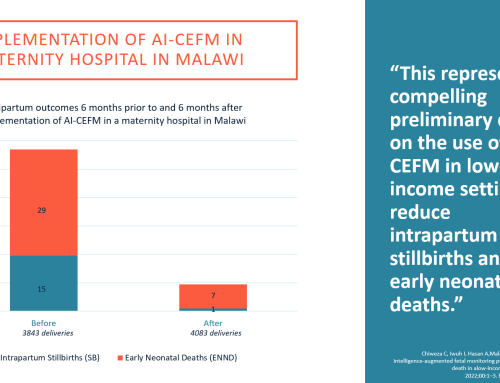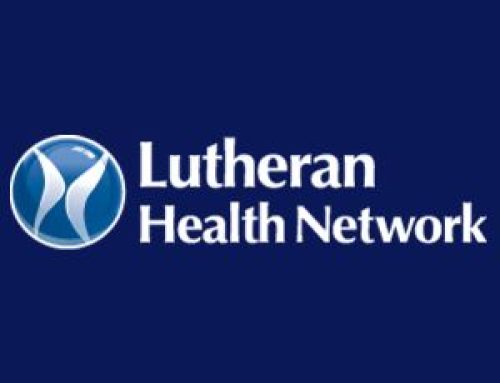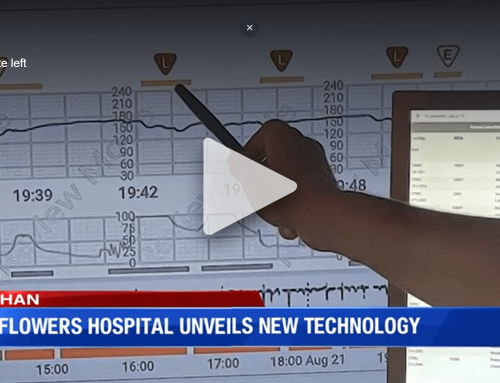
February 15, 2013
By Rajiv Leventhal
While the ability to see new lives enter the world every day is a blessing, being an obstetrician (OB) or a delivery room nurse can be quite stressful. Many are working in understaffed environments, are tired, new, or just having a bad day, and having access to an “expert opinion” right at the bedside to help them make crucial decisions can be very beneficial.
Enter PeriGen, a Princeton, N.J.-based provider of fetal surveillance systems employing patented, pattern-recognition and obstetrics technologies that empower perinatal clinicians to make confident, real-time decisions about the mothers and babies in their care. In January 2012, the 328-bed Norwalk Hospital in Connecticut decided to implement PeriCALM Tracings, which provide real-time, automated assessments of labor progress and fetal heart rate patterns.
After a study—released in January 2013 and validated by the National Institutes of Health (NIH)—revealed that the PeriCALM software can be used to efficiently evaluate stored fetal heart rate data retrospectively as well as to screen in real time when an expert is not continuously evaluating the fetal heart rate, Healthcare Informatics Assistant Editor Rajiv Leventhal had a chance to speak with Yoni Barnhard, M.D., Chairman of the Department of Obstetrics and Gynecology at Norwalk Hospital, about the advantages of using software in delivery rooms to screen in real time.
How has the implementation of PeriCALM affected OBs and delivery room nurses?
They love the system, across the board. First, it’s absolutely improved communication between nurses and physicians. It’s given the nurses a more credible voice in discussions with physicians about the analysis of a fetal heart rate tracing. Across the country, especially in community hospitals like ours, physicians come to work in the morning, start the induction process on their patient, go to the office, and become reliant on whoever is in the hospital (nurses, residents, hospitalists, etc.) to help them analyze what is going on.
Now, they can see in real time what is happening, even though they are in the office. And the nurses are looking at the same tracing. If there is any discrepancy with the interpretation of the tracing, PeriCALM is used to provide a real-time assessment of what is happening. This means there are far fewer instances where nurses have felt the need to go up the chain of command in order to just be able to get a physician’s attention about a concern they have. This has absolutely changed the safety culture in terms of labor and delivery. We had done a safety culture survey before we implemented PeriCALM and in the next few months, we’ll do another one. I think we will see that it has changed the nurse’s perception of perinatal safety.
And the alert system allows for enhanced situational awareness on the labor floor. In the central command area, we have a large flat screen on the wall and you can see all of the fetal heart tracings on there. Everyone can see the same thing, and if there is anything in any room out of the ordinary in any tracing, you get an alert. And anyone can respond to it who is sitting there. I think the nurses feel they are not the only ones looking at a patient’s tracing. If they are doing something else at that moment, there is a whole team of people looking, making the data much more objective. Nurses are very happy with that.
How do the PeriCALM alerts specifically work?
PeriCALM is built on the National Institute of Child Health & Human Development (NICHD) criteria for fetal heart rate tracings, which looks at five main components: baseline fetal heart rate; presence or absence of accelerations (increases in fetal heart rate, which are reassuring); presence of decelerations (which may be of concern); variability (how fetal heart rate changes from one beat to the next); and uterine contractions. If any of these five parameters are abnormal, as defined by national guidelines, nurses will get an alert. Normally, we would be able to see most of these things, but wouldn’t be able to respond immediately. That is the big change—there is no delay in recognition that something needs to be addressed. It’s enabled us in a more timely fashion to recognize that there is a potential problem.
What are some other advantages of implementing this kind of delivery room software?
In 25 years, I have never been in a hospital that had an alert system that was both auditory and visual. We’ve always had the most traditional type of fetal heart monitoring systems, which is what most hospitals have—just a record of the fetal heart rate. But if it is at night, and the hospital is not ideally staffed, nurses might see something that is not quite right but cannot respond immediately due to being so busy. Now, with PeriCALM, you have to respond because the system will keep alerting you. Every alert requires a response, and all of that information goes into the electronic medical record (EMR). A physician, for example, might get a pop up on his or her screen saying that pitocin should not be administered due to a patient’s category II tracing. So if the physician attempted to increase the pitocin, he or she would be unable to do so. It will make what we do much more evidence-based and it will help doctors and nurses follow best practice guidelines at the most critical decision points. The main reasons for medical errors revolve around communication errors and bad physician decision making. These tools will help prevent errors and are part of an overall comprehensive safety plan.
What advice would you give to other hospitals concerning fetal surveillance systems?
When you take state-of-the-art technology and put it on a labor floor, it makes a significant difference. It improves documentation, patient care, and enhances safety. If I can do one thing in this country to change care with labor and delivery units, it would be to put PeriGen units in. And I have no financial incentive to say that.
________________________________________
Source URL: http://www.healthcare-informatics.com/article/leading-edge-labor-and-delivery-operations-norwalk-hospital-implements-real-time-delivery-ro


